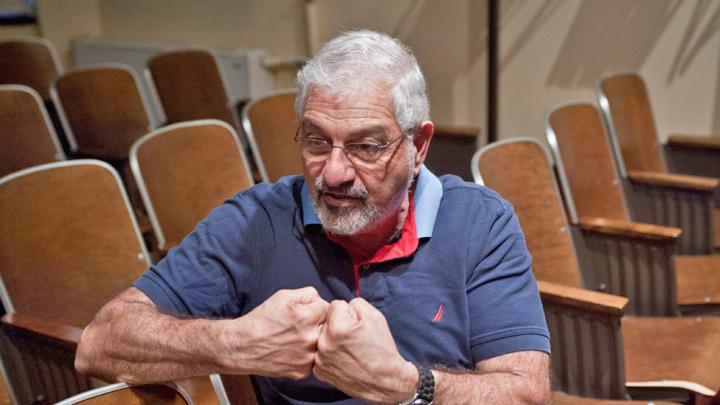When the Ottoman Empire entered World War I on Germany’s side in 1914, more than 15 million individuals—an ethnic mix of Kurds, Turks, and other groups—lived in Anatolia. Among them was a population of an estimated 2 million to 2.5 million Armenians, mostly concentrated in the six provinces of Eastern Anatolia, along what was quickly becoming the bloody front of Russo-Ottoman conflict.
By the war’s end, 90 percent of the empire’s Armenian population had disappeared, University of Michigan historian Ronald G. Suny explained in a Thursday seminar sponsored by Harvard’s Davis Center for Russian and Eurasian Studies. Within a few short months, they’d been slaughtered, driven into exile to face certain starvation in the deserts of modern-day Syria, or forcibly converted and assimilated into local Muslim communities.
“The word for what happened had not yet been invented,” Suny reflected. “At the time, those who needed a word borrowed it from the Bible, and called it holocaust. My great-grandparents were among the victims.” (His paternal grandfather, Grikor Mirzaian Suni, hailed today as a founder of modern Armenian music, escaped to Russia soon after the war began.)
Speaking to a room crowded with fellow scholars and members of the local Armenian community, Suny traced the historical causes of the 1915 genocide. His book “They Can Live in the Desert but Nowhere Else”: A History of the Armenian Genocide (Princeton) will appear in March; the following month marks the centennial of the genocide, commemorated on April 24, the date that Ottoman authorities began rounding up Armenian intellectuals in Istanbul.
Even a century later, the controversy surrounding the politicized memory of the genocide has meant that scholars themselves have paid relatively little attention to truly exploring its causes, Suny explained. Those who have denied that the events of 1915 constitute genocide—including the Turkish government—have often considered these massacres a purely “rational” effort to quell rebellion during a time of war. Historians on the other side, particularly Armenian scholars, have similarly “tended to shy away from explanation” of the genocide’s root causes, worried that any attempt to explore those causes risked shifting blame to victims of the Turkish policies.
The result, Suny thinks, has been an overreliance on a narrative of national conflict. “In the absence of explanation,” he asserted, “what you have is essentially an essentialist argument—that is: Turks are the kind of people who employ massacre and systematic killing to maintain their imperial dominance. It’s almost a racist argument.”
“I have a bias, as a historian, to look for more complicated explanations,” he reflected. On Thursday, he presented a theory of the genocide that attempts to reconstruct the mental, emotional, and social environment in which the reformist and nationalist Young Turks, who took power in 1908, saw massacre as a solution to the perceived, but largely imagined, threat of Armenian separatism. His explanation rejected the tendency to read the events of 1915 as a natural continuation of various instances of anti-Armenian violence in the previous two decades. Instead, the historian explored the specific mindset—what he called the “affective disposition”—of the leaders who instigated the genocide. In the context of war and a contracting empire, their resentment, fear, and anger curdled into a hatred so strong that mass killings were seen as a possible solution to the perceived threat of the Armenian community.
Ultimately, Suny argued, the genocide was an event contingent on the specific choices that leaders made, and the context in which they lived. “This argument doesn’t begin with primordial nations, inevitably confronting one another,” he concluded. In contrast, his work explores what he called “the moments of choice, when political actors could have acted differently, but decided instead to embark on a course that led to devastation and destruction.”







